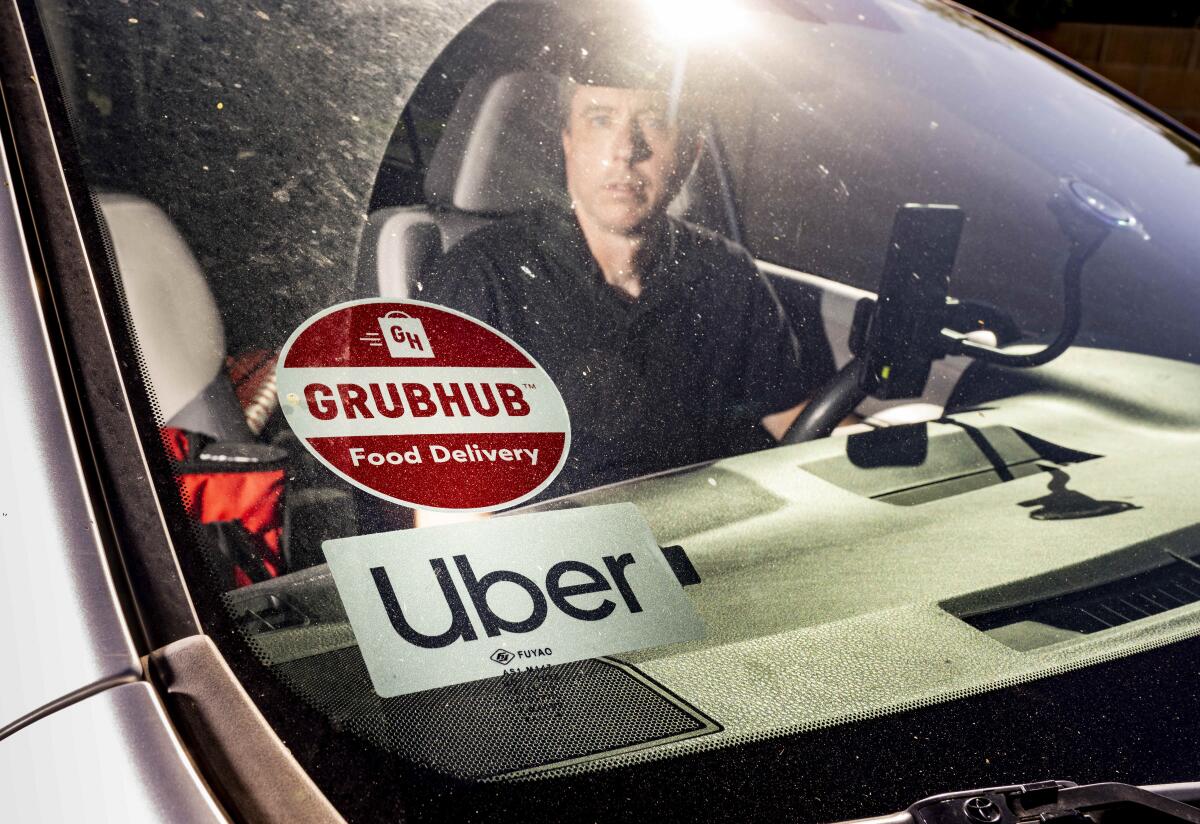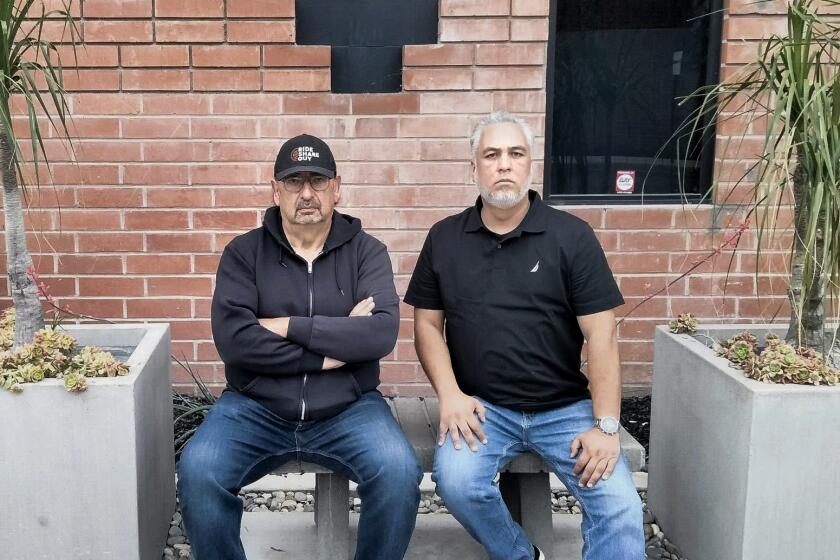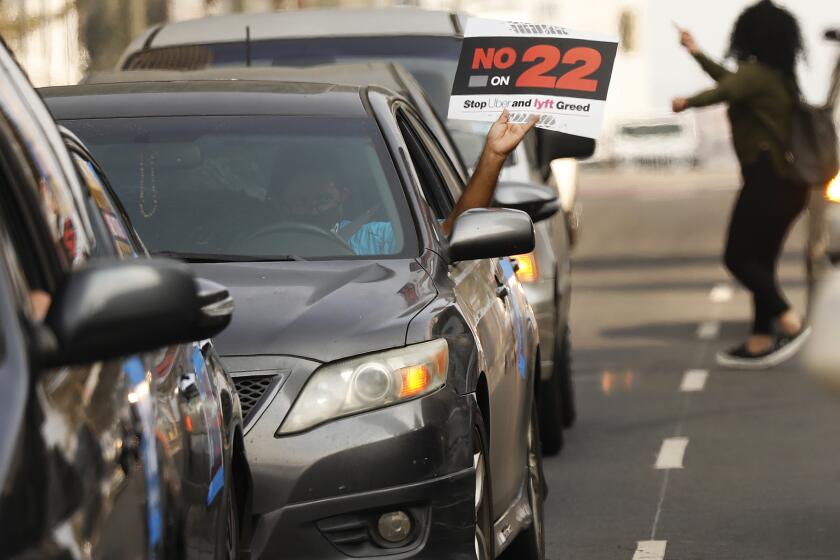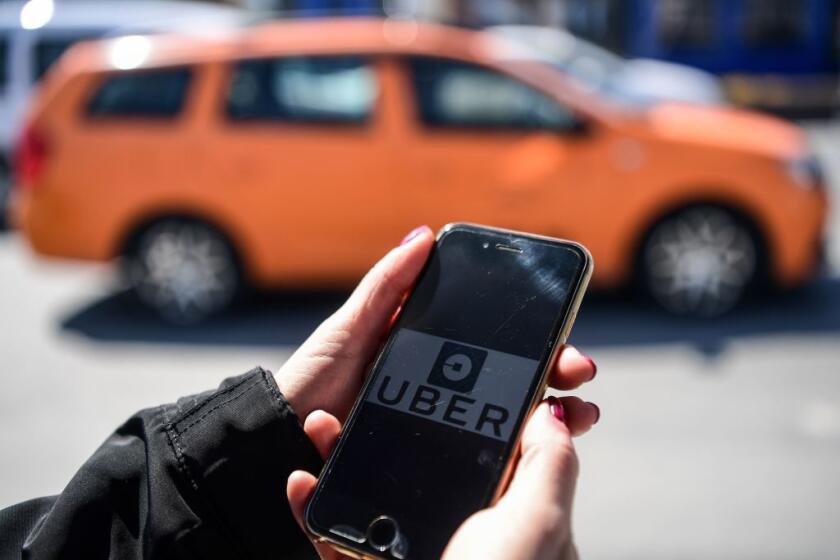This app shows California gig workers when they can make the most money — and guarantees their income

- Share via
Should you drive Uber or Lyft? DoorDash or Grubhub? Instacart or Amazon Flex?
This app will tell you which job to work and when — and guarantees your earnings each hour.
Solo, a Seattle-based startup that aims to empower gig workers with financial management services, rolled out its smart schedule and pay guarantee program in major metropolitan areas in California and New York City on Wednesday.
“This is a bigger mission for us to really empower a completely new way of working [that] people are embracing, and it’s about flexibility while bringing in more stability,” said Bryce Bennett, who founded Solo in 2020 with Keith Ng. Both of them are ex-employees of Uber and Convoy, an on-demand trucking company.
The app uses $2 billion in earnings data collected from more than 150,000 workers across the country to generate hourly predictions of how much a worker would make at each job, whether it’s driving for Uber or doing package deliveries for Amazon.
After Uber and other gig giants failed to pay a mandated rate hike, two eagle-eyed drivers started asking questions — and won a jackpot for California gig workers.
Workers would have the flexibility to choose which job to do as wages fluctuate throughout the day, but the app goes one step further and allows them to guarantee the income Solo predicted for a certain gig work platform.
If Solo predicted earnings of $20 an hour driving for Instacart from 9 to 10 a.m. tomorrow, for example, a gig worker could use one credit — equivalent to 25 cents — to lock in those earnings. If the worker ends up making less than $20, Solo pays the difference. If the worker makes more than predicted, he or she can keep the extra.
For someone who works an eight-hour day, it would cost $2 to guarantee a day’s income through Solo.
The feature is available to gig workers in parts of Los Angeles and Orange counties, as well as Riverside, San Diego, Sacramento and the San Francisco Bay Area. More than 8,000 workers in Southern California have joined the platform.
The company says it has paid out hundreds of thousands of dollars to workers so far to make up for their earnings when predictions have fallen short. Some cities, such as Las Vegas, are harder to predict than others — factors including concerts, special events, tourism and inclement weather can all have a big effect on ride and delivery pricing.
An appellate court determined Proposition 22 should stand, disagreeing with a 2021 ruling finding that central provisions of the law conflicted with the state Constitition, rendering the law unenforceable, and tossing it out in its entirety.
But for the most part, Bennett said he’s confident in Solo’s predictions, which will improve over time as more and more users join the platform. The current goal is to run the pay guarantee program at a net neutral.
“Over time, [the pay prediction] gets more dialed in and becomes not only a floor people can trust, but they can really use it to optimize their earnings and earn more,” Bennett said. “Some workers earn 40% more per hour when they start to shift their jobs around and work the right job at the right time.”
Solo now predicts and guarantees pay in more than 50 major metro areas across the U.S., with New York City being the last of the big cities to be added. The company raised $5.3 million in seed funding in 2021.
Solo also helps workers with tracking things such as income and expenses, mileage and doing taxes. These features can be accessed with a monthly subscription of $6 to $20 and can help the average app-based worker take home $5,000 more a year, the company boasts.
Bennett said Solo is in touch with the various companies that depend on gig workers and sees opportunities for collaboration in the future.
Column: If you work for Uber or Amazon, you may be a victim of algorithmic wage discrimination
With reams of data at their disposal, companies like Uber and Amazon are demolishing the notion that people who do the same work should receive the same pay for it.
“Long term we think we can help those companies reach new workers as well as reduce their churn with better resources for the people that work on those platforms,” Bennett said.
More to Read
Inside the business of entertainment
The Wide Shot brings you news, analysis and insights on everything from streaming wars to production — and what it all means for the future.
You may occasionally receive promotional content from the Los Angeles Times.














